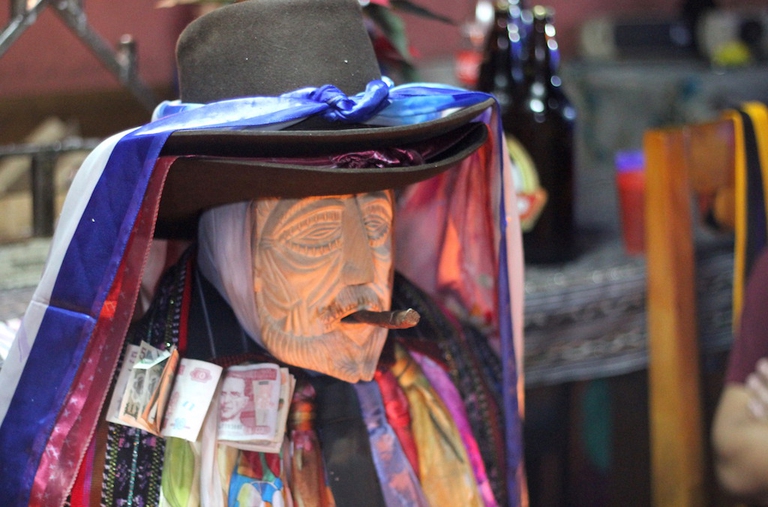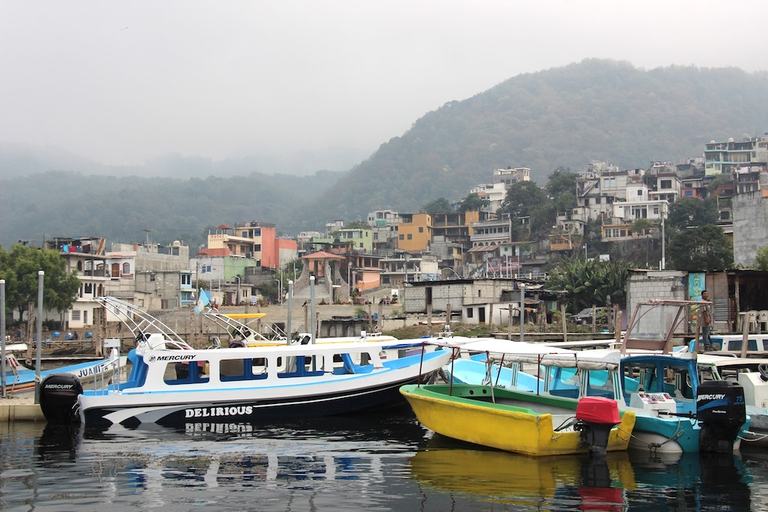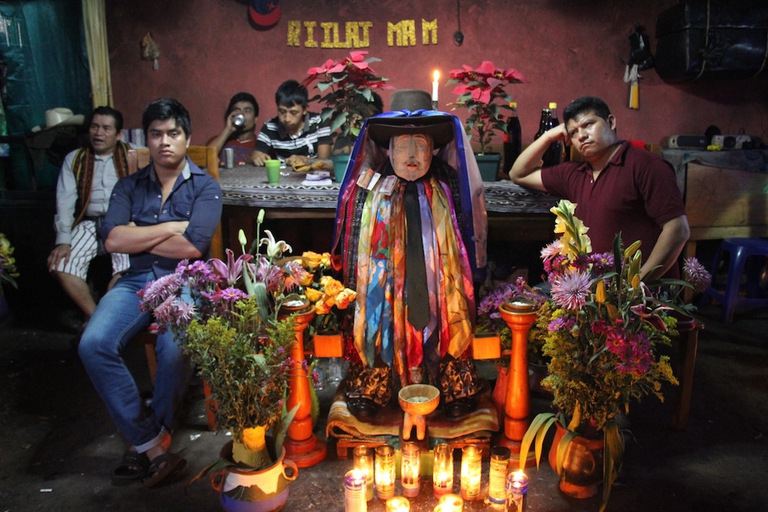
Homecast is a podcast series recorded in quarantine in which creatives from around the world share their lived experiences of these unique circumstances. Creator Giacomo De Poli tells us why this collective diary was needed now more than ever.
Maximón, also known as San Simón, is an important Mayan folk saint in Guatemala represented by a dressed up wooden effigy sitting on a chair who, unlike other saints, smokes cigars and drinks alcohol. Today Maximón is actively worshipped as part of what we could refer to as “folk Catholicism“, especially in the highlands of
Maximón, also known as San Simón, is an important Mayan folk saint in Guatemala represented by a dressed up wooden effigy sitting on a chair who, unlike other saints, smokes cigars and drinks alcohol. Today Maximón is actively worshipped as part of what we could refer to as “folk Catholicism“, especially in the highlands of Guatemala. His visitors travel from near and far to come see him and ask for protection, money, to be cured or even find a husband. Maximón receives everyone – men and women, villagers and urban dwellers, prostitutes and entrepreneurs – who come with many offerings including tobacco, liquor, money and tortillas (his favourites).
Read more: The Mayan calendar explained, how to find guidance in ancient wisdom
Mayan priests have made this figure their own. Every year, he travels from one house to another in the place in which he resides, especially in the Guatemalan highlands he originates from, that is in Santiago Atitlán. Maximón evolves with the times by changing his look to fit the situation he finds himself in.
He has as many names as he has faces. One modern interpretation of his name is that it derives from “Ma’am”, the Mayan underworld deity known as the great grandfather or protector of the community, and Simón after the apostle Simon Peter. The names are divided clearly into two groups; names of Mayan deities, and Catholic or Spanish ones. Maximón is a great example of the syncretisation that has taken place since the Spanish conquest of the Guatemalan highlands in 1524. Indigenous populations have blended traditional elements of pre-Colombian culture with aspects of Catholicism to help preserve their own religion. It is in the context of this new religion that the folk saint exists, even though often at its fringes.
He is also venerated abroad as the cult goes beyond Guatemala’s borders. Given that many Guatemalans have migrated to Mexico as well as the USA and Canada due to difficult economic and political conditions in their home country, they’ve brought the worship of the saint with them. These countries have seen sacred spaces open up such as the San Simón Indigenous Spiritual Temple in New York, and others in California and Florida, to welcome Maximón, known to bring prosperity and facilitate business and travel.
He has many other roles too. He makes people’s dreams come true. He challenges believers. He heals. He helps overcome obstacles. He stands against injustice. He dances the night away. He brings wealth and success. Fertility and prosperity. He wins the heart of women and protects from infidelity. In fact, he is the lord of sexuality standing for all unresolved matters of a moral nature.
Legend says that one day he was caught sleeping with the wives of the village men who had supposedly gone to work. Furious, they cut his legs and arms off. So Maximón also makes mistakes, which makes it easier for people to relate to him. Sometimes when he brings justice to a person, it is even at the expense of another. Thus, he sits at a crossroads between being both a deity and a trickster, a friend and a fiend.
Maximón is more than just a saint. He represents the resilience of Mayan people in the light of their struggles against oppression, a symbol of hope and transformation.
Siamo anche su WhatsApp. Segui il canale ufficiale LifeGate per restare aggiornata, aggiornato sulle ultime notizie e sulle nostre attività.
![]()
Quest'opera è distribuita con Licenza Creative Commons Attribuzione - Non commerciale - Non opere derivate 4.0 Internazionale.
Homecast is a podcast series recorded in quarantine in which creatives from around the world share their lived experiences of these unique circumstances. Creator Giacomo De Poli tells us why this collective diary was needed now more than ever.
Time magazine’s 100 Women of the Year project sheds light on influential women’s stories, from Amelia Earhart to Greta Thunberg. A selection of some of the greats for International Women’s Day.
Leaving cliches behind, beauty and sexuality in old age are widely unexplored topics. Photographer Arianne Clément tells why she chose to shed light on this universe.
Un violador en tu camino – the rapist is you – is an anthem protesting the impunity of gender-based violence. It began in Chile and has become a global flash mob, bringing people to the streets and resonating all over the world.
The Oxford English Dictionary has chosen “climate emergency” as 2019’s Word of the Year because of its effectiveness in communicating a sense of urgency in the fight against global warming.
Filmmaker Dhondup Wangchen was imprisoned by the Chinese government for his documentary condemning the Tibetan condition. He tells us how he continues to fight for his people even after the traumas faced.
To mark the release of Anthropocene: The Human Epoch, we interviewed photographer and co-director Edward Burtynsky, who told us the story behind the documentary.
Snowflakes can be deceiving. Banksy transformed them from a marker of winter festivities into a symbol of the plague of air pollution in his mural Season’s greetings in Port Talbot, Wales.
Artist Jeff Hong imagined how Disney fairy tales’ characters would live in the real world: the result – or better the ending – is everything but happy.










